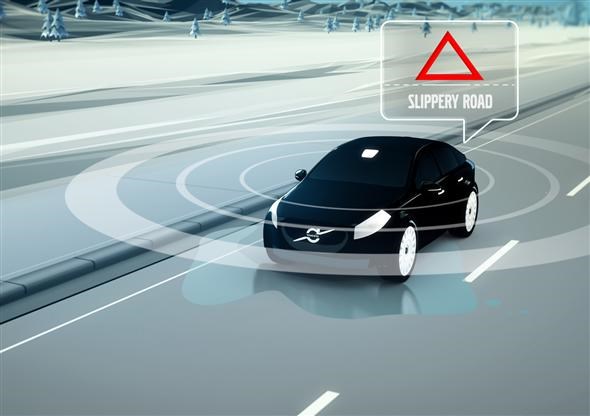Even before it patented the three-point seat belt 50 years ago, Volvo was already a brand synonymous with car safety. Based on the new active safety technologies the firm showcased recently in Sweden – which will be launched in the near future – this reputation looks like it’ll be set in stone.
For company car drivers and fleet managers alike the new features will not only make driving safer but will reduce motoring costs due to a significant decrease in both insurance premiums and bodywork repair bills.
At Volvo, there’s a more poignant reasoning behind the development of the electronic system. It goes hand-in-hand with the company’s aim that by 2020 nobody will be seriously injured or killed in one of its new cars. That’s a bold statement of intent and one that also offers the benefits of protecting other road users and pedestrians as well as offering time-saving conveniences.
Volvo’s all-new XC90 is expected in the second half of 2014 and will be the first car equipped with some of the technology. As it’s developed, other features will be introduced on new models based on the same platform.
Pedestrian detection in darkness
Volvo claims this will be a world first when launched on the 2014 XC90. It builds upon the daylight-capable system introduced in 2010. With 44% of pedestrian fatalities occurring after dark, any measure to reduce this figure is welcome.
Using both radar and a faster, more sensitive camera, models equipped with the system will detect pedestrians in the road just 30 metres away using only the light from dipped beam headlights. At urban speeds that’s sufficient for the automatic braking system to stop the car before a collision occurs.
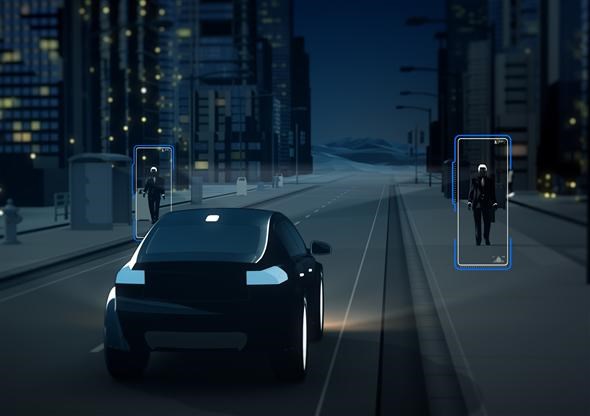
Adaptive cruise control with steer assist
Adaptive cruise control has been around for a few years now with many drivers enjoying the benefits of being less stressed as they go about their commutes. It lets the car determine its speed by monitoring the progress of the vehicle in front.
With the addition of autonomous steering – available from launch on the new XC90 – the car will also consider the angle the car in front is travelling, or the direction at higher speeds, and assist the driver by turning the steering wheel.
Current legislation doesn’t permit a driver to go ‘hands-free’ at the wheel and under normal circumstances any influence the car is exerting on the wheel itself is barely noticeable. Loosen your grip slightly and it’s much more apparent, gently pulling left or right as conditions dictate.
Volvo’s extensive research over the past four decades indicates that the majority of accidents occur when the driver loses focus, so think of this system as an aid for those moments rather than something that will do all the work for you.
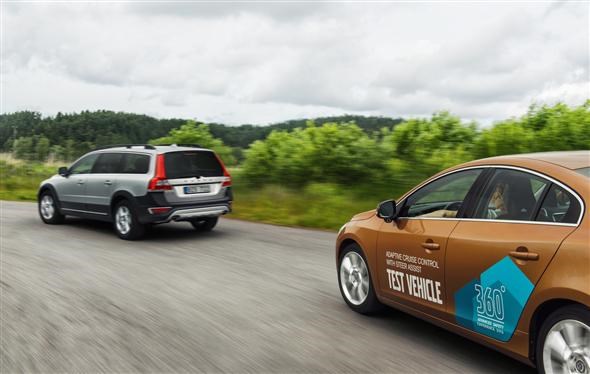
Road edge and barrier detection with steer assist
Working at speeds of more than 40mph, the new XC90-debuting technology will automatically steer the driver away from roadside barriers if it thinks they are not reacting quickly enough, braking where necessary to aid a sudden change of direction.
It is designed to reduce the 50% chance of a fatality when a car veers off the road at speed.
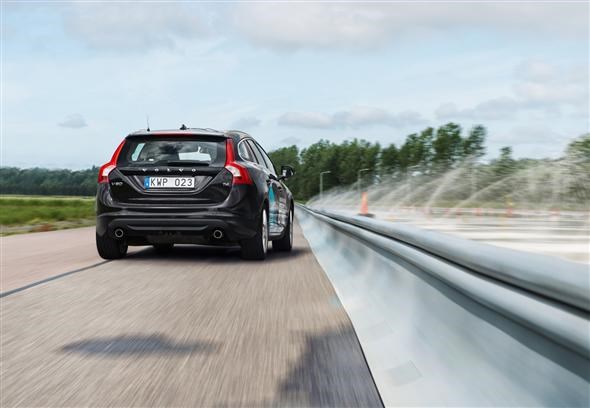
Collisions with large animals
In another global premiere during the first year of new XC90 sales, the camera and radar systems constantly monitor for animals wandering onto the highway. Smaller animals are ignored but larger beasts are quickly identified, both in daylight and at night, and the car begins to slow.
While this might not be as frequent an issue in the UK, in Sweden alone there are 1,000 accidents per week in which elks and other large animals are struck by cars – more often than not on remote country roads.
Due to the unpredictability of the movements of wild animals, the goal isn’t necessarily to stop the car but instead slow it down so that if an animal is hit there is a greater chance of it being knocked forwards rather than being scooped up by the bonnet before breaking the windscreen.
Volvo’s research indicates that striking a large deer at 60mph leads to a 70% chance of serious injury for front seat occupants, with a speed reduction significantly improving the chance of escaping relatively unscathed.
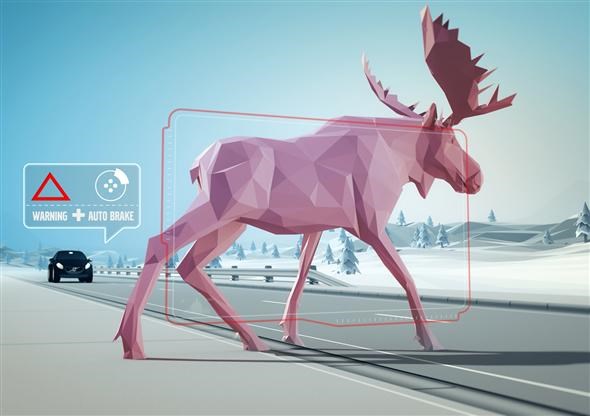
‘Car 2 Car’ communication
Utilising both Wi-Fi and mobile phone networks, vehicles equipped with this system will transmit data such as road conditions to others using satellites.
Equipped cars will also frequently download the information alerting drivers to dangers on the roads of your inputted route in the navigation system and redirect you, as well as signalling your proximity to unseen obstacles like a broken-down car around a blind bend.
The introduction of this technology will be in stages, with the first applications still a couple of years away. It could eventually include traffic light monitoring to optimise speeds to always meet green lights and even let you know when emergency service vehicles are approaching, whether or not their sirens are switched on.
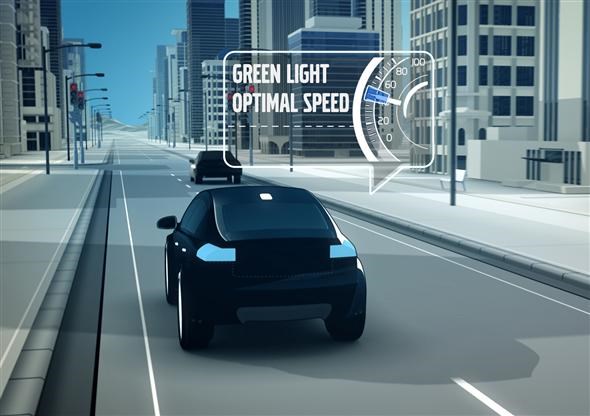
Autonomous Parking
The technological concept that most feels like a ‘Tomorrow’s World’ feature is a system that will automatically park cars.
Developed from existing systems where cars self-park with the driver still seated in the car, this version is controlled by a smartphone app and reduces the fear factor some motorists experience when returning to a dimly lit multi-storey at night.
When the relevant instructions are sent from the phone to the car, it will slowly drive itself around the car park from a drop off zone, monitoring for other vehicles and pedestrians, before sending you a confirmation message when it’s successfully reversed into a slot.
There’s a retrieval system too using the same app, sending the car back to the predetermined zone outside to collect you.
This system is still several years away from being perfected and many protocols need to be established – not least how car park payment is taken care of and how the car will know if there is even a space available for it.
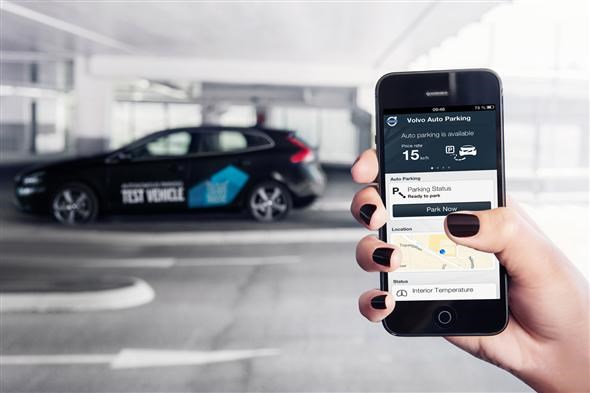
Too much control?
Volvo is aware that some drivers may be concerned that such systems may be considered as nannying interferences but those involved in the technological developments believe they supplement the driving experience rather than take it over.
By reducing driver distractions and keeping them calmer, Volvo’s suggestion is that they would be less stressed and consequently safer whenever they assume full control of the car.
Legislation needs to change significantly in the coming years if Volvo’s expectation that by 2020 cars can be fully self-driving is to become a reality. Even when such systems are both legal and viable, however, the firm promises that the driver will always be free to take over.



